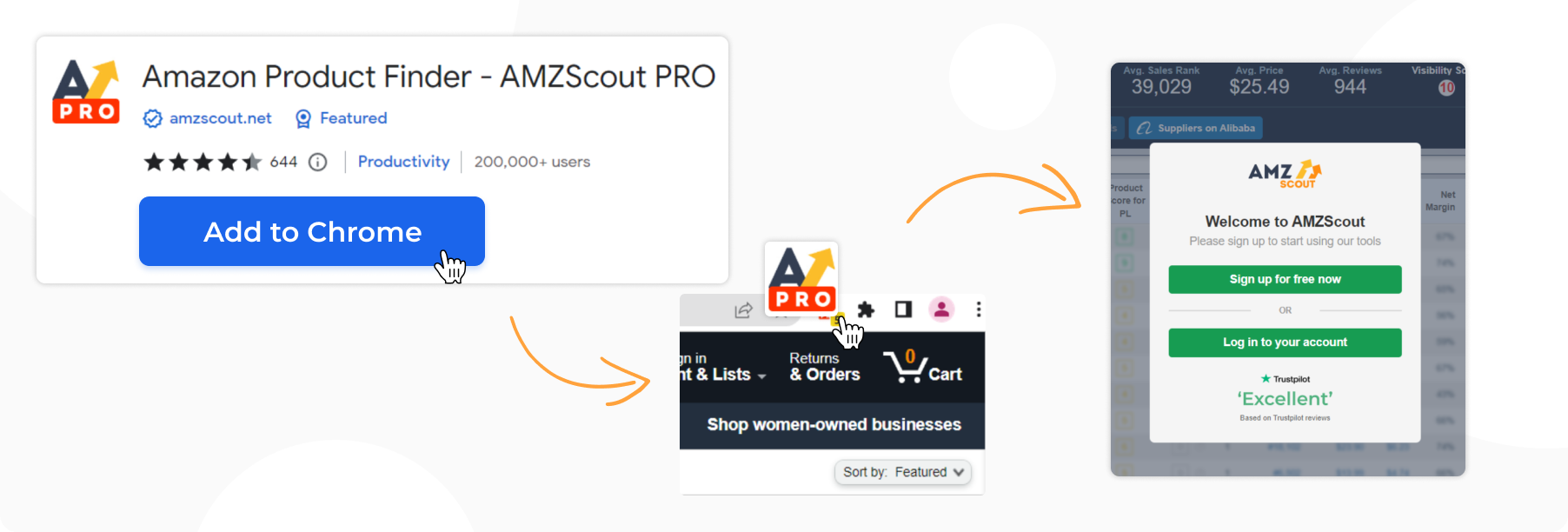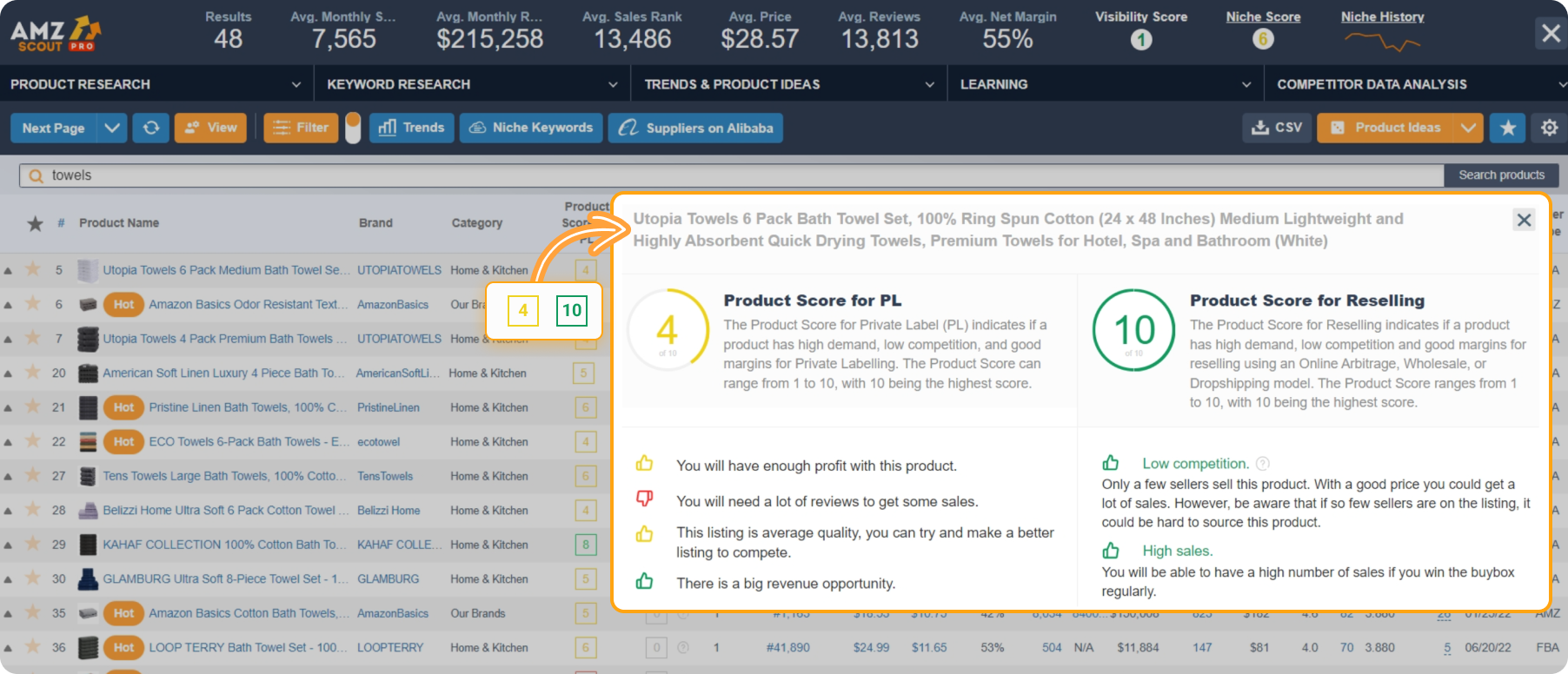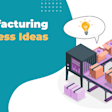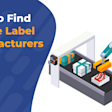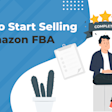
How to Find a Manufacturer for Your Product: Tips and Strategies
Sourcing products directly from manufacturers is one of the most beneficial methods, but it also requires thorough research. It's important to find a manufacturer that suits your business model and offers favorable terms. However, it's also important to balance the purchase price of your product and quality to keep customers happy and ensure profitability.
How to Find a Manufacturer for Your Product
This article provides an overview of how to work with manufacturers, and guidance on how to purchase goods directly in the most efficient way.
Key Differences: Manufacturer vs. Supplier vs. Distributor
Many people use the terms manufacturer, supplier, and distributor interchangeably; however, these are different things. "Supplier" is a general term for where you can source products, and includes both manufacturers and distributors. Let's examine the last two terms briefly.
A manufacturer is a company that produces goods from raw materials or components and creates products from scratch. Purchasing directly from manufacturers can often result in lower costs since there’s no middleman involved. However, manufacturers may require you to place larger wholesale orders, especially when they’re producing products on demand.
While manufacturers create products, the handling of sales and other logistics is typically managed by distributors. Distributors often purchase directly from brands to secure exclusive rights for selling products in specific markets or countries, thereby minimizing competition and enhancing market control.
Example: Brand X manufactures sneakers. Distributor Z purchases a large quantity of sneakers from Brand X and sells them to retail stores, securing exclusive selling rights in the U.S.
Types of Manufacturers
Manufacturers differ depending on the types of products in which they specialize (for example, clothing manufacturers), and there are countless types of them. Let’s take a look at the different categories based on their operational models:
Branded manufacturers: These companies typically offer high-quality products that are easily recognized by customers. Keep in mind, obtaining brand permission to resell their products can be challenging for newcomers.
Private label manufacturers: They offer customization like adding your brand logo or making minor modifications, which is cost-effective and quick. However, building and promoting your brand will also require marketing investments and effort.
On-demand manufacturing: These manufacturers produce a product from scratch based on your requirements. They offer full customization, but it may take longer and incur higher expenses due to setup costs.
Choosing the right type of manufacturer of a product depends on your particular business strategy and budget. Finding a branded manufacturer is relatively straightforward. You typically locate the contact information for a B2B representative, which is usually available on the brand's official website or LinkedIn, and then reach out to them.
However, finding a manufacturer for your own product or brand involves more steps and nuances. Let's explore this further in the next section.
How to Find a Manufacturer for Your Product
The process of finding a manufacturer varies depending on the product, so the specific steps might differ slightly. In general, this process typically consists of four main steps. Let's explore each of them in detail.
Step 1: Decide What You Want to Manufacture
Before choosing a manufacturer and starting the manufacturing process, you need to have a clear idea of what you want to create. To achieve this, follow these steps:
Explore the market: Don't start producing items solely based on your own personal preferences without conducting ample market research. Use tools like Google Trends to help you gauge customer demand, and check social media platforms to identify current trends in your niche.
Find an idea: Make a list of potential product ideas and carefully evaluate factors like potential profitability, competition level, and more. This analysis will help you choose the most viable product idea.
Develop the design: Consider hiring a professional designer to create an appealing look for your product and packaging. Also, be sure to register your brand and logo with the USPTO to protect your intellectual property.
Evaluating a product idea can be challenging for sellers, as essential data like monthly sales and competitor numbers aren't always readily available from open sources. Fortunately, Amazon sellers can use the AMZScout PRO Extension to analyze products quickly and efficiently.
Validate Your Product Idea on Amazon
If you plan to sell on Amazon, you can verify if your product ideas are the best options for private labeling. However, this method is also useful for all sellers on other platforms as well, since Amazon is a trusted e-commerce leader that reflects market trends. To determine if a product is worth your time and effort, follow these steps:
1. Install the AMZScout PRO Extension. Enter your email address to start a free trial.
2. Start your search. Use the Amazon search bar to find a product by entering the name of the item.
3. Open the Extension. Click the AMZScout icon in your browser extension bar in the upper-right-hand corner of the page.
4. Check the niche’s performance. Click on the Niche Score in the top-right corner of the opened window. If this score exceeds 7, this indicates that the niche has significant potential for high profits.
5. Evaluate individual items. If the niche seems promising, access individual items by clicking Product Score for PL next to any item. This number indicates its suitability for private labeling, along with specific reasons, and helps you filter out products that don't align with your business model.
6. Assess product performance. Click Product History under any item to check sales trends and pricing fluctuations. It's crucial to ensure that there are no significant dips, and that the trend is either growing or stable.
7. Calculate your potential profits. Click Profit Calculator under the product you’re interested in. Enter your costs for the item (including the estimated price to produce the product, shipping expenses, etc.) to see your profit margins. A result of over 20% is considered sufficient not only to cover essential expenses but also to sustain continued growth.
Following these steps enables you to determine the viability of your product idea and allocate resources effectively. Once you decide on a product to create, now it's time to find the right manufacturer. Let's explore key considerations when searching for a manufacturer.
Step 2: Decide Between Local vs. Overseas Manufacturing
When you’re looking for a manufacturer, deciding between local and overseas options is crucial, as this can impact your business's performance significantly. Consider the following factors:
Quality: Products manufactured locally often boast higher quality due to more stringent regulatory standards and superior materials.
Cost: Overseas manufacturers typically offer lower costs due to reduced labor expenses and lower Minimum Order Quantities (MOQs). However, these savings can be offset by customs fees and higher shipping expenses.
Time: Logistics for overseas manufacturing involve complexities like extensive paperwork and longer transit times. In contrast, sourcing locally can reduce lead times and minimize potential delays.
Moral considerations: Choosing local manufacturing supports the economy by providing jobs to local communities.
Communication: Opting for local manufacturers eliminates language barriers and minimizes time zone differences, facilitating smoother communication and project management.
Business opportunities: Sourcing overseas can yield significant cost savings, allowing you to order larger quantities or diversify your product range. Conversely, local manufacturers enable quicker market entry due to faster delivery time.
Your choice between local and overseas manufacturers will depend on your business goals and personal preferences. To make an informed decision, consider testing both options with small-batch orders or trial products. Now we’ll explore where to find a manufacturer for your product.
Step 3: Conduct Research
There are numerous ways to find a manufacturer. Here are the top seven most effective methods:
Online marketplaces: Check websites (like Alibaba and Temu) that offer a wide range of products and suppliers at competitive prices. You can even find manufacturers without leaving the PRO Extension by clicking Suppliers in Alibaba.
Industry events: Attend trade shows and conferences to meet manufacturers in person, evaluate product quality firsthand, and establish personal connections that can help you negotiate favorable terms.
Local Chamber of Commerce: Contact your local chamber of commerce or city hall for a list of reputable manufacturers in your area who have demonstrated reliability.
Google Search: Conduct a Google search to find manufacturers in your specific niche. Use terms like "manufacturers near me" or "USA manufacturers" if you prefer to stick with local sourcing.
LinkedIn: Join industry-specific communities on LinkedIn to connect with B2B representatives and discover potential manufacturing partners.
Online Directories: Explore platforms like ThomasNet, which provide profiles of reliable manufacturers and detailed information about their services.
Social Media: Engage with Facebook groups in your niche where manufacturers often advertise their services. You can also post inquiries in relevant community forums to receive recommendations.
It's beneficial to create a shortlist of 15-20 potential manufacturers to consider. When evaluating each one, it's necessary to ask key questions to help you determine the best match for your business needs.
Step 4: Ask Questions
Evaluating a manufacturer begins with ensuring their reliability. Here are a few ways to do this:
Verify business licenses and certifications: Ensure that the manufacturer has all of the necessary documentation for the products they produce and the materials they use.
Check reviews and ratings: Look at how long they’ve been in business, and read reviews from other clients.
Chinese court database: For manufacturers in China, consider checking the Chinese court database for any legal issues.
If a manufacturer proves to be reliable, you also need to ask questions about the product itself and business operations. Here are a few generic questions suitable for any type of business or product:
What quality control measures does the manufacturer have in place?
How long does it take to manufacture an order?
How does the manufacturer handle shipping and logistics?
If they offer delivery, what are the shipping costs?
What is the MOQ? Are there any discounts for larger orders?
Is it possible to lower the MOQ for the initial test batch?
What are their available or preferred payment methods?
What is the return policy in case of damaged products or failure to meet requirements?
Based on their answers, select the manufacturer that meets your requirements. For long-term collaboration, ensure that the quality of communication is satisfactory and convenient. Then, you can proceed to set up a contract and place an order. Let's review the effective completion of this step.
What’s Next
Before finalizing a contract with a manufacturer, it's important to negotiate several key aspects of the agreement. This approach can lead to more favorable terms for your business.
Discuss Conditions
When negotiating with a manufacturer, consider the following tips to optimize your agreement:
Logistics: If you’re importing products internationally, request Delivery Duty Paid (DDP) terms to reduce customs fees expenses. Ensure that the manufacturer prepares all of the necessary documentation for shipping.
Payment terms: Inquire about installment payment options to improve your cash flow management. Discuss consignment arrangements if possible.
Communication: Obtain direct contact details of the person in charge of your project manager, and verify if there are any holiday schedules that may affect production timelines.
Contractual terms for breach: Clarify the procedures and consequences outlined in the contract in case either party wishes to terminate the partnership.
While it may not always be possible to secure all requested terms, obtaining some of these concessions demonstrates a manufacturer's reliability and potential as a long-term business partner.
Test the Product
Once you've negotiated all details, proceed to order a prototype. This allows you to see how your product will look and function in reality. Consider testing the product with friends or family to gather initial feedback. If any adjustments are needed, you can contact the manufacturer to address them promptly. This step can save you time and money by ensuring that the product meets your standards before ordering a large batch.
Place an Order
If you’re satisfied with the quality of the product, place your order for the first large batch of products. Typically, this involves providing advance payment to secure production. Maintain regular communication through established channels to address any manufacturer inquiries, receive updates, or provide prompt feedback.
If the manufacturer doesn't handle logistics, it's necessary to find a reliable logistics company. Review all costs carefully, including potential hidden fees for packaging. Verify the materials used for product protection during transportation.
Upon receiving the batch, it's crucial to meticulously inspect the products to ensure that they meet your standards for quality and packaging. Then you can start selling it. Below are a few tips on how to do this efficiently.
Additional Tips on Selling Your Manufactured Product
When it comes to generating initial sales, launching a new brand in the market can be challenging. Here are some tips to help you get started:
Run advertising campaigns: Utilize pay-per-click advertising to capture customer attention and drive sales.
Monitor customer feedback: Review customer feedback regularly and contact your manufacturer for necessary adjustments. Encourage positive reviews to build trust, and respond to inquiries within 24 hours.
Optimize your delivery options: Offer fast and reliable delivery services. Consider providing free shipping for orders above a certain amount to encourage larger purchases.
By implementing these strategies effectively, you can maximize the potential of your product, drive traffic to your store, and foster a collaborative relationship with your manufacturer. This partnership will ensure continuous product improvement and customer satisfaction, ultimately leading to more sales.
Conclusion
Sourcing products directly from manufacturers can be highly convenient and profitable as long as favorable terms are negotiated. However, the success of any business depends not only on securing discounts, but also on choosing a promising product, as this is key to finding the right manufacturer. Utilize AMZScout to pinpoint high-demand products that will drive revenue and accelerate your business growth.
